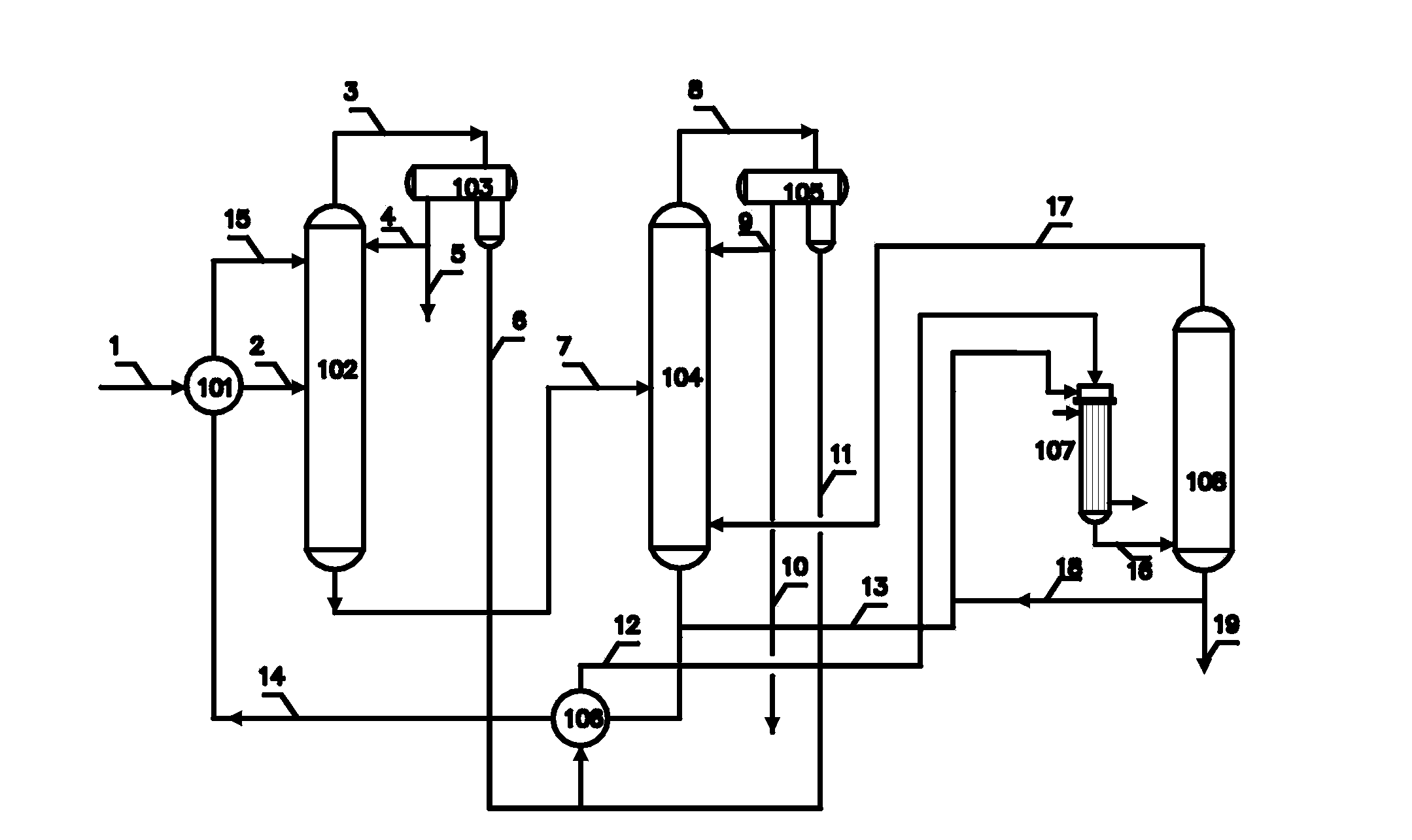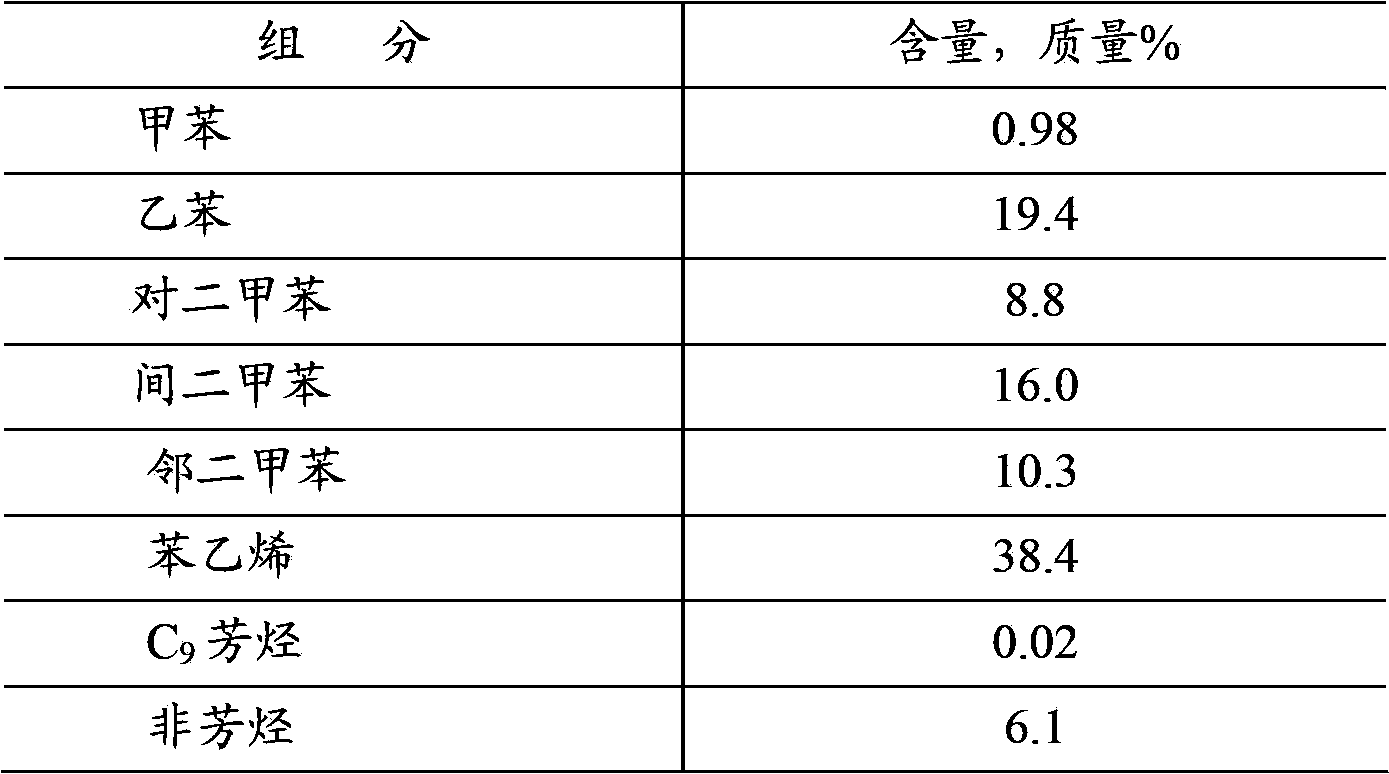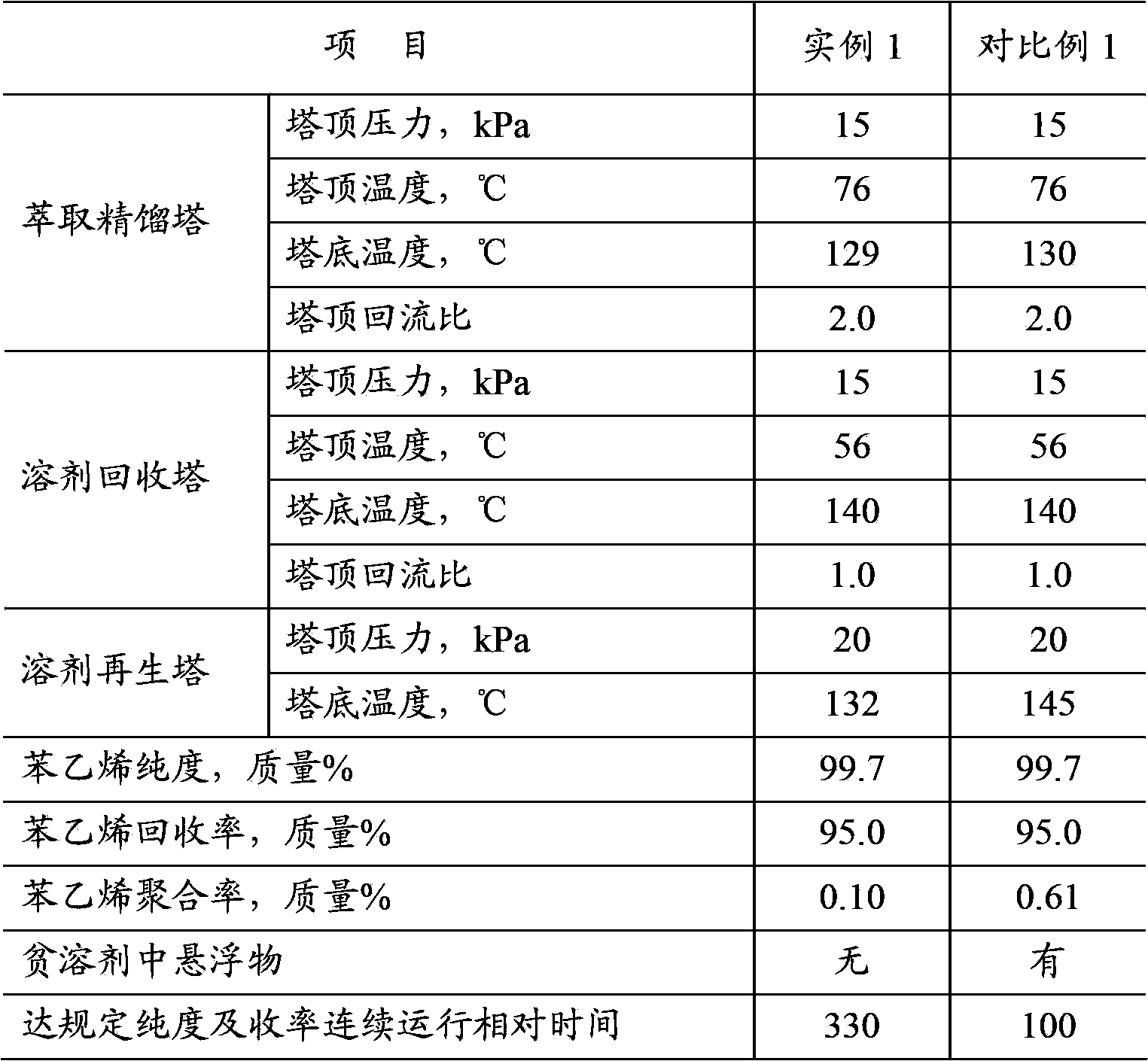Method for separating styrene from hydrocarbon mixture by extractive distillation
A hydrocarbon mixture, extractive distillation technology, applied in distillation purification/separation, organic chemistry, etc., can solve the problems of affecting heating effect, trouble, easy scaling of plug-in heaters, etc., to increase operating time, prevent polymerization, regeneration The effect of temperature reduction
- Summary
- Abstract
- Description
- Claims
- Application Information
AI Technical Summary
Problems solved by technology
Method used
Image
Examples
example 1
[0043] pyrolysis gasoline C 8 The distillate is the raw material, and its composition is shown in Table 1. according to figure 1 The shown flow process carries out extraction rectification to described raw material, reclaims styrene wherein, the composite solvent used contains the main solvent sulfolane of 99 mass %, the auxiliary solvent 4-methoxyphenol of 0.5 mass % and the water of 0.5 mass % , the polymerization inhibitor is 25% by mass of 4-hydroxyl-2,2,6,6-tetramethylpiperidine nitroxide radical (OH-TEMPO), 55% by mass of 4,6-dinitro-2- Secondary butylphenol (DNBP) and 20% by mass of N,N-diethylhydroxylamine, the mass ratio of the injected polymerization inhibitor to the raw material is 300μg / g, the solvent regeneration adopts reduced-pressure falling-film evaporation, and passes through the falling-film evaporator Combined with the solvent regeneration tower.
[0044] The number of theoretical plates in the extractive distillation column is 70, and the composite solv...
example 2
[0053] By the method of example 1 from pyrolysis gasoline C 8 Separation of styrene in the fraction, the difference is that the composite solvent used contains 88% by mass of the main solvent sulfolane, 5% by mass of 2-methoxyphenol, 6.5% by mass of triethylene glycol monomethyl ether co-solvent and 0.5% by mass of water , the operating conditions and results of each column are shown in Table 3.
example 3
[0055] By the method of example 1 from pyrolysis gasoline C 8 Separation of styrene in the fraction, the difference is that the inhibitor used is 35% by mass of tris (2,2,6,6-tetramethylpiperidinyl nitroxide free radical) phosphite, 35% by mass of 2,6 -Dinitro-p-cresol (DNPC), 30% by mass of N,N-diethylhydroxylamine, the mass ratio of polymerization inhibitor to raw material is 200 μg / g, the operating conditions and results of each tower are shown in Table 3.
PUM
 Login to View More
Login to View More Abstract
Description
Claims
Application Information
 Login to View More
Login to View More - R&D
- Intellectual Property
- Life Sciences
- Materials
- Tech Scout
- Unparalleled Data Quality
- Higher Quality Content
- 60% Fewer Hallucinations
Browse by: Latest US Patents, China's latest patents, Technical Efficacy Thesaurus, Application Domain, Technology Topic, Popular Technical Reports.
© 2025 PatSnap. All rights reserved.Legal|Privacy policy|Modern Slavery Act Transparency Statement|Sitemap|About US| Contact US: help@patsnap.com



